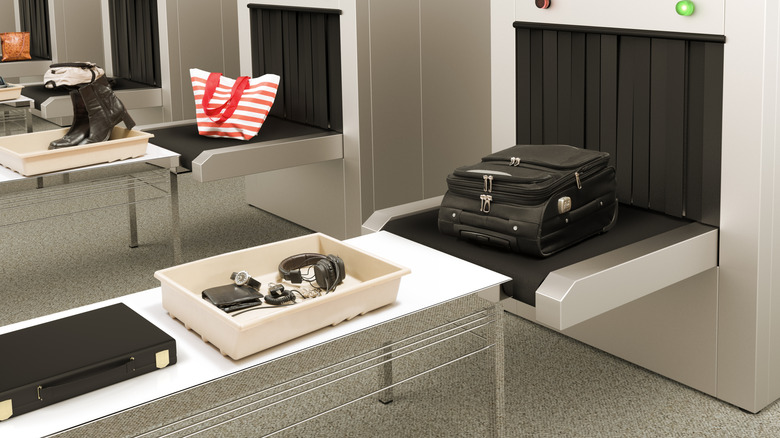The Unexpected Liquidy Food That Is Oddly An Exception To TSA's Strict 3-1-1 Rule
The Transportation Security Administration's 3-1-1 rule is one of the strictest guidelines travelers must follow when flying. According to the rule, all carry-on liquids must be limited to containers no larger than 3.4 ounces, and the containers must fit into one, single quart-size plastic ziplock bag per passenger. Additionally, fliers must be familiar with the bizarre items TSA considers to be a liquid, such as peanut butter and creamy cheese.
Oddly enough, eggs, a naturally liquidy food, aren't included in the 3-1-1 rule. Yep, a slightly runny egg dish that exceeds 3.4 ounces is generally allowed through airport security, according to a tweet on the official TSA X (formerly known as Twitter) account. And if, for any reason, you want to pack fresh chicken eggs on your trip, you're also in luck. TSA allows whole eggs, shell and all, in both carry-on and checked luggage without restrictions. However, to avoid getting flagged by TSA, be sure your eggs are easily accessible and kept separate from other items during the screening process. It's okay to wrap the egg carton with protective plastic or paper, but note that it should be easy to open in case a security officer requests an inspection.
Not all eggs are allowed through TSA
If you're stuck in the economy cabin, you might want to create a first-class meal experience by bringing your own in-flight charcuterie board and other deluxe snacks. Unfortunately, a serving of luxurious caviar might not be permitted through airport security. TSA shared in a punny tweet, "Caviar wishes on your next flight? Make sure your containers are eggs-actly 3.4oz or less in your carry-on."
While caviar is basically unfertilized fish eggs, security agents view it differently from chicken eggs because it's a spreadable food. In general, anything that's spreadable, spillable, or pourable is deemed a liquid by TSA. As long as your chicken eggs are either cooked or protected by a shell, they don't automatically fall into this category the way a container of caviar might.
Keep in mind that other types of wet or gel-like fish eggs, such as salmon roe, will likely be treated the same as a tin of caviar. If you want to pack fish eggs in your carry-on, consider freezing them before heading through security, to bypass the liquid restrictions. You can use an ice pack to keep the food cold, though any melted liquid must adhere to the 3-1-1 rule.

